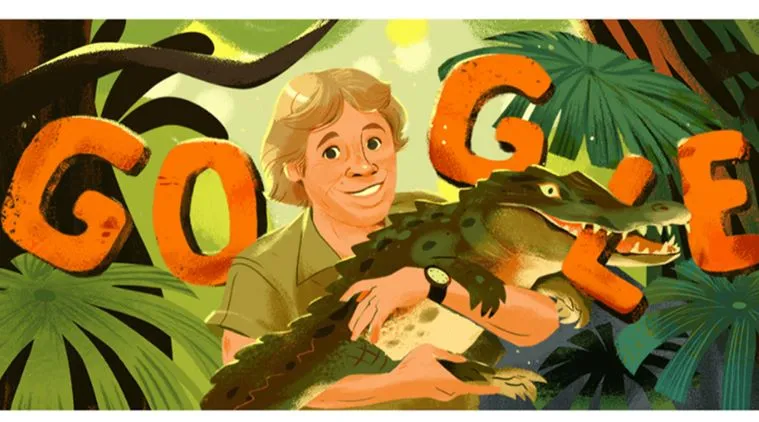Many zoos spend fortunes to try to turn what was once a run-of-the-mill city park into a landscape of extraordinary beauty... and many fall short. It doesn't help that few zoos start of with the sheer majestic grandeur that the Cheyenne Mountain Zoo enjoys. Billing itself as "America's Only Mountaintop Zoo", the Colorado Springs facility was opened in 1926 as a complement to a luxury hotel located at the base of the mountain. At the entrance, the elevation is at 7,000 feet, and it only goes up from there. From several points across the zoo, it is possible to take in grand, panoramic views of all of Colorado Springs and the surrounding countryside.
For a zoo that literally has almost no level ground on the entire campus, it seems ironic that the primary habitat displayed here is the African plains. Sure enough, though, that's the case, with much of the first section of the zoo being devoted to the signature species of Cheyenne Mountain - the giraffe. Over 200 giraffe calves have been born here, and the herd at any given point consists of several animals. The world's tallest land mammals can be viewed inside, outside, at eye level, or as part of a panoramic yard. And what giraffe exhibit would be complete without a chance to buy an approved treat and offer it up from a feeding platform? To tell you the truth, I actually found CMZ's giraffe exhibit a little underwhelming - knowing how famous the zoo is for its giraffes, I was expecting something truly awe-inspiring and unique. I guess that's the thing about giraffes, though - they really aren't that complicated of an animal to keep in zoos, and they will thrive in some pretty basic condition - a paddock, a barn, a hanging feeder. No sense going super high-tech and fancy if the basics will do just as well.

The giraffes are but one species featured in the
African Rift Valley, which also includes paddocks for zebras, red river hogs, and the closest relative of the giraffe, the
okapi. Smaller exhibits scattered around the perimeter include griffon vultures,
meerkats, spur-thighed tortoises, and crowned cranes. The quintessential African star attractions, lions, are found in a very unique exhibit. When someone told the architects that the exhibit was to be themed after the Great Rift Valley, they really took them at their word. The lion exhibit is a sheer cliff face, with the big cats lounging on one of several rocky ledges that make up the back of the exhibit. When the lions deign to come down to level ground (of which there is still a decent amount), visitors can view them face-to-face through floor-to-ceiling viewing windows. Another towering exhibit is next door, this one featuring
black-and-white colobus monkeys and rock hyraxes. Visitors can view the monkeys from differing levels as they ascend a staircase (or elevator) that runs along the exhibit. This might be the best exhibit of colobus I've ever seen - huge, lots of terrain differences, lots of climbing structures, and grassy lawns.
More African wildlife is find around the bend at
Encounter Africa, home to the zoo's African pachyderms. After crawling through the stimulated wreck of a downed plane (great for a photo op), visitors encounter a beautiful black rhino exhibit - on some days you may be lucky like I was and get to watch a training demonstration, with the rhino coming up to the front of the exhibit for keepers to work with. Around the corner are the elephants in a huge paddock, complete with feeder trees and water features. Many zoos, seeking to counter anti-zoo propaganda, are striving to make their elephant programs as transparent to the public as possible, and Cheyenne Mountain provides a great example. Their enormous elephant barn is
open to the public. From an elevated walkway, visitors can gain a great understanding of how much work and devotion goes into caring for the world's largest land mammals.

(At this point, I'd like to point out one aspect of Cheyenne Mountain which went back and forth between amusing and irritating me. There are lots of life-sized animal statues half-hidden around the place, some in what seem to be exhibits at first glance. For example, right outside the elephant barn there is a series of statues of a pack of hyenas. I kept doing double-takes around the zoo, thinking I saw animals that were actually statues. Sometimes I thought it was cool. Other times, it was like, 'Aw man, I wanted it to be a real hyena...")
Across the path from the African area, almost tucked into the hidden center of the zoo, are two old-style rocky grottoes for two very different mountain mammals. One holds Asian black bears in a serviceable but uninspired rock heap that were very much
all in the fashion a few decades ago, when this was presumably built. The other was the one I was most excited to see - Cheyenne Mountain Zoo is one of only two zoos in the United States to display the mountain tapir, the smallest, woolliest, and, if we're being honest, cutest of the tapirs. I want to visit
every zoo (well, every
good zoo, at least) at some point, obviously, but the chance to see a mountain tapir was a major motivation for me planning this trip to Colorado Springs.
Across from the tapirs is the
Monkey Pavilion, formerly home to the zoo's big cats. It's not that great of a building - lots of small, barred cages that I'm sure are on CMZ's to-replace list (though they made the right call in switching out big cats for smaller primates, which tend to do better in old-style cages). Among the species housed here are lar gibbons, black mangabeys, and ring-tailed lemurs. Coatis are also found here, as are sloths. As living proof that even some of the oldest, most antiqued exhibits can have some cool, innovative features, I'd point out the neat sloth exhibit. The sloths have the potential to exit the exhibit, go over the heads of visitors in the hallway, and climb to a perch outside for sun and fresh air. It's a very impressive feature that lets a sloth exercise a great deal of control and decision-making over how to spend a day.

Up the slope from Africa (and let's face it, all of Cheyenne Mountain is "up the slope" is the next continental area, Australia. Visitors can walk among red-necked wallabies, watch
Matschie's tree kangaroos doze in the crock of a tree, feed budgies in a walk-through aviary, and observe emus and Australian shelducks (the later two being noteworthy as some of the only bird exhibits in the Cheyenne Mountain Zoo). American alligators - possibly serving as a stand-in for Australia's saltwater crocodiles - can be found in a pool nearby.

Cheyenne Mountain Zoo's modest reptile collection is found in the Scutes Family Gallery, the former reptile and bird house. In a weird departure from most zoos, the reptiles (most of which are of the variety seen in pet stores are not displayed in natural habitats, but in kind of kitschy habitats with glass beads and pottery and what not. There was a sign at the entrance that explained that the point was to make people more comfortable with snakes and lizards by not presenting them as a wild "other." Can't say I really buy into this one, but thanks for thinking outside the box. For most visitors, the stars will be the Burmese pythons, displayed in what looks like an indoor meditation garden,
For more on the rest of Cheyenne Mountain Zoo, check out
Part II of the review, coming tomorrow!





































